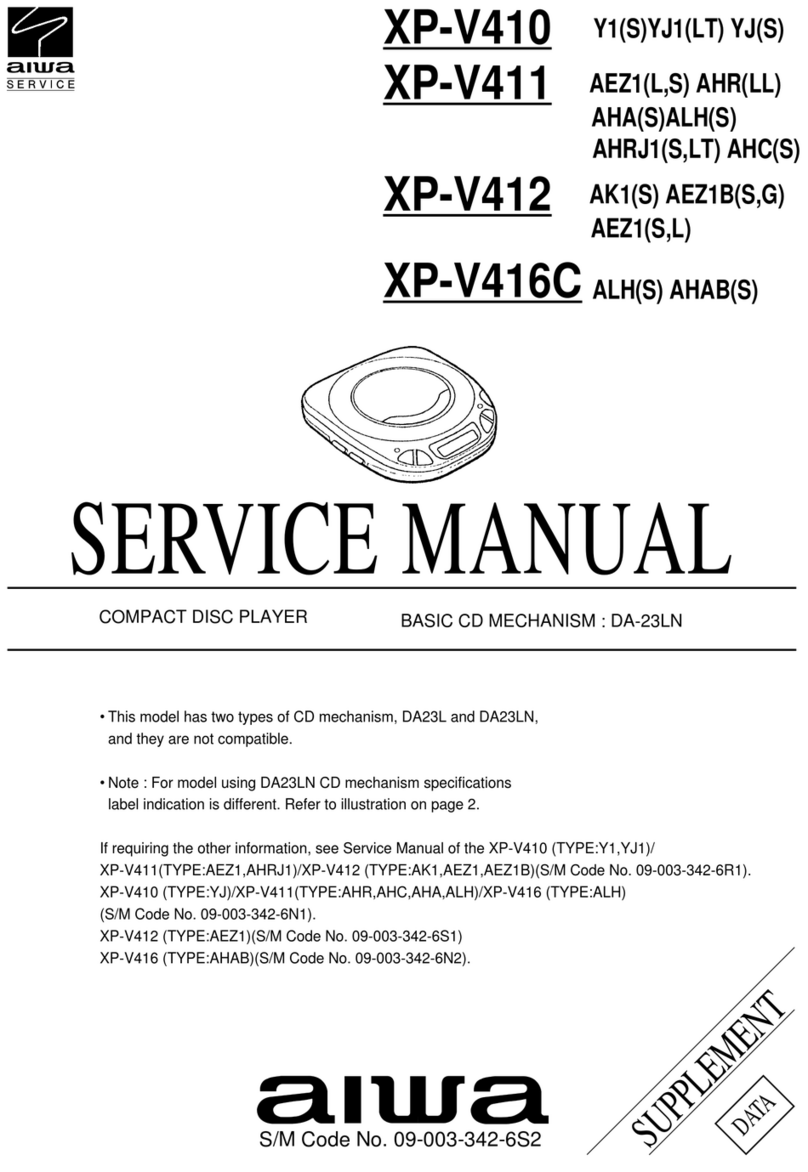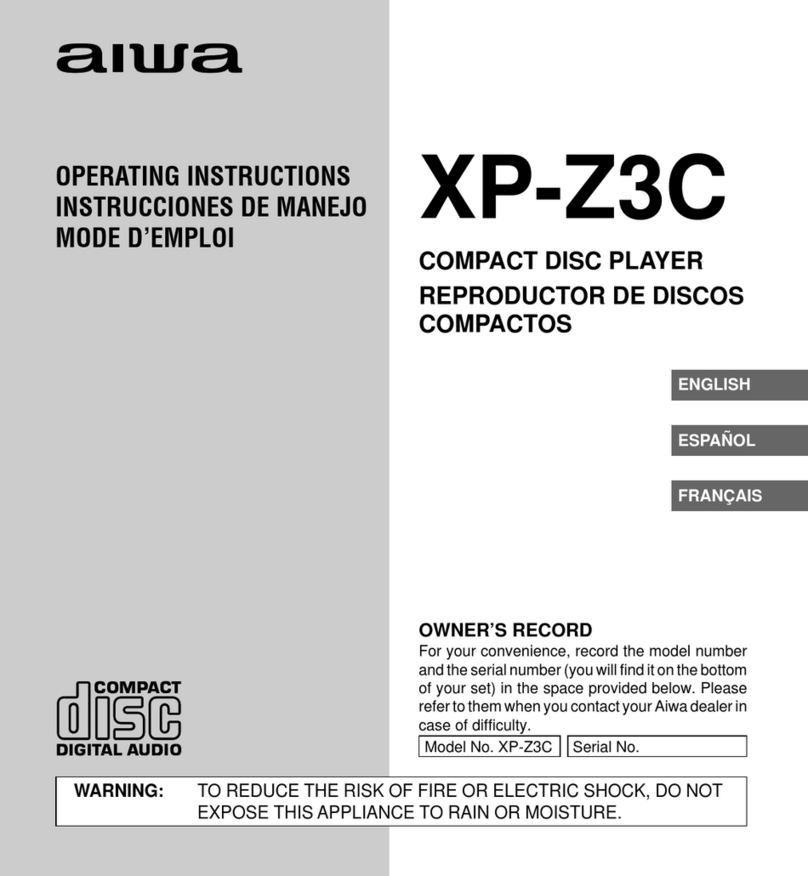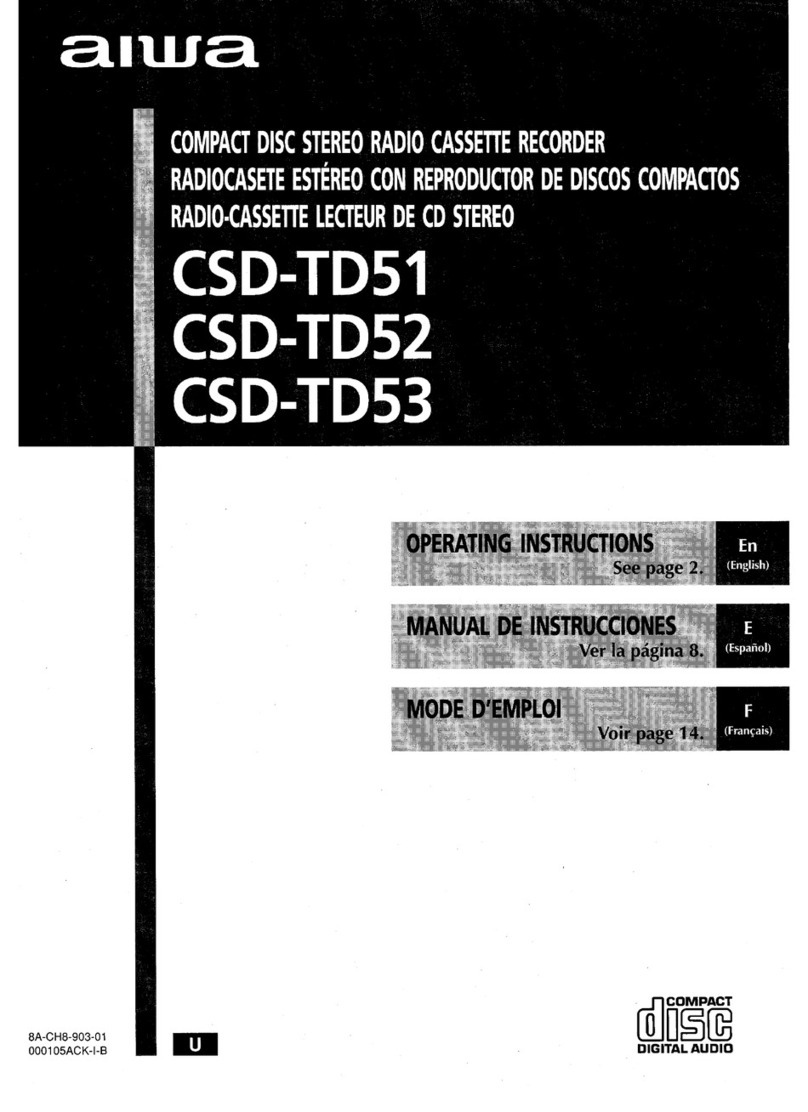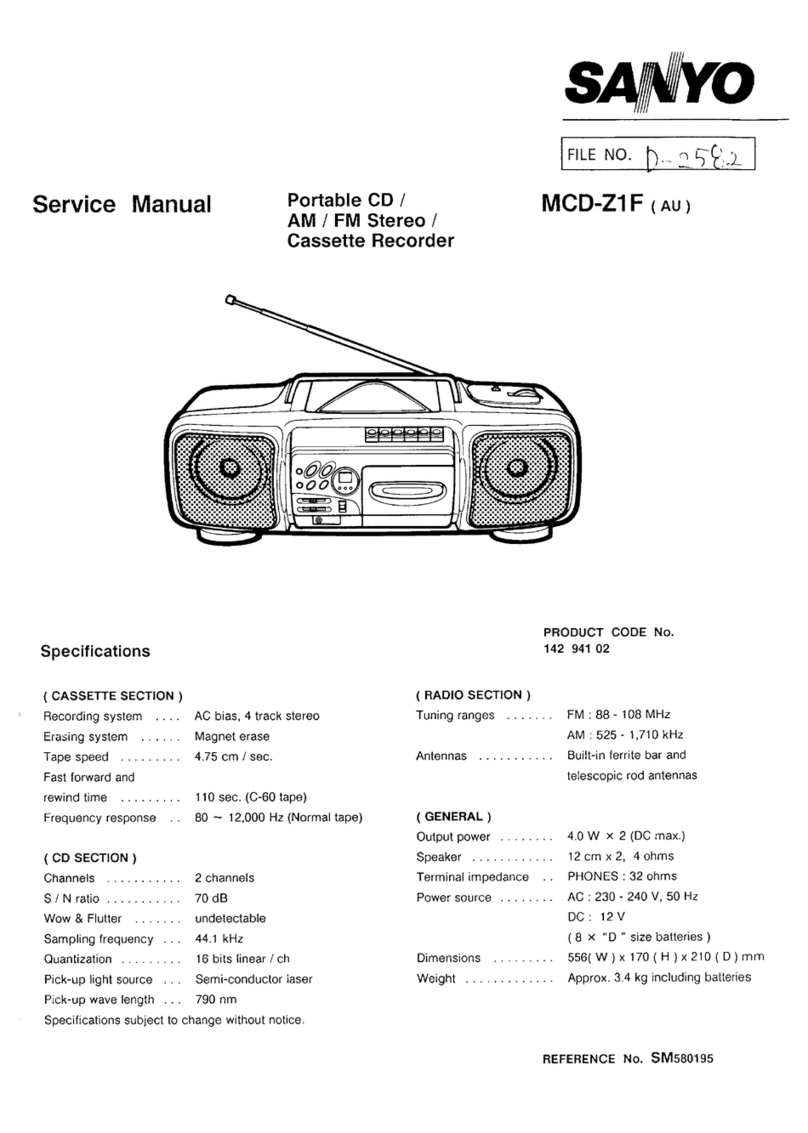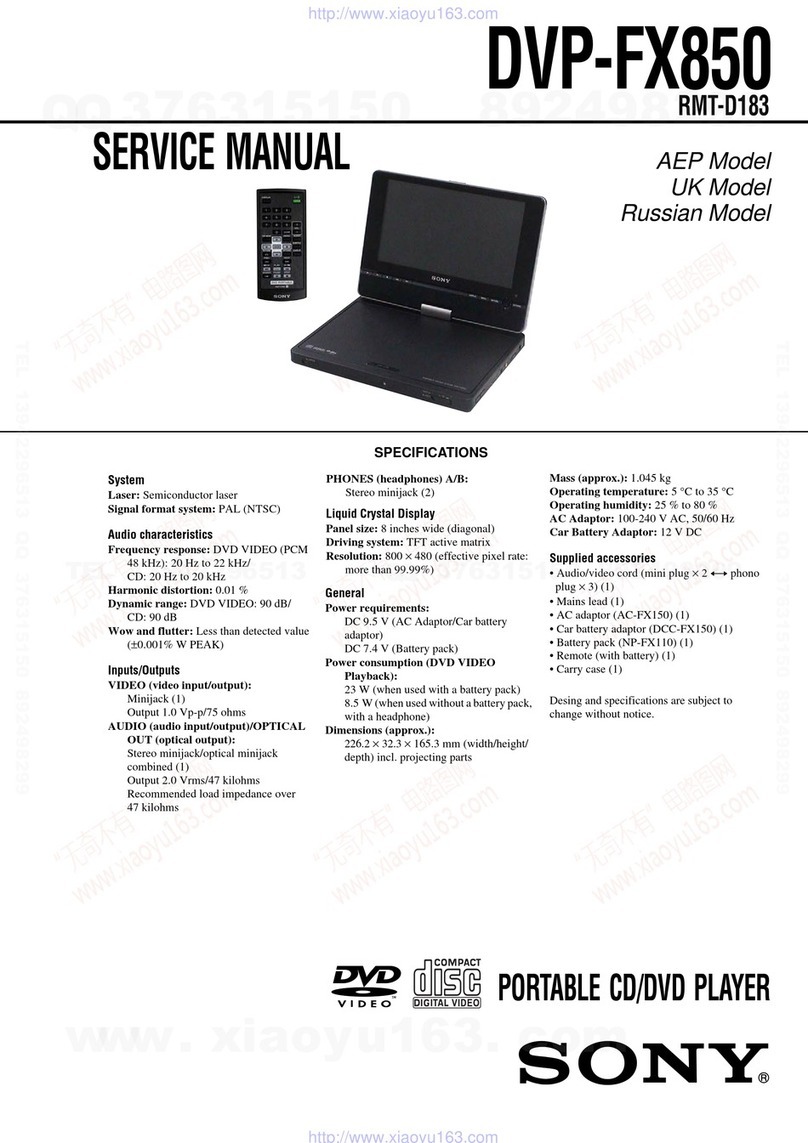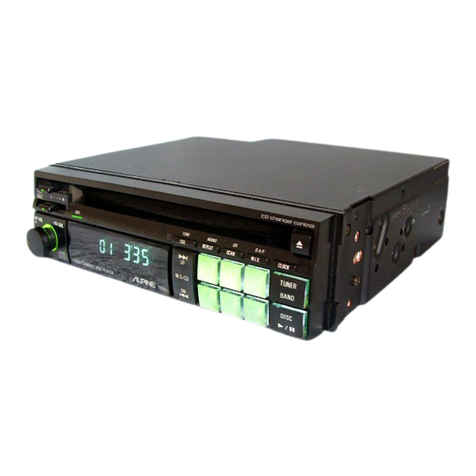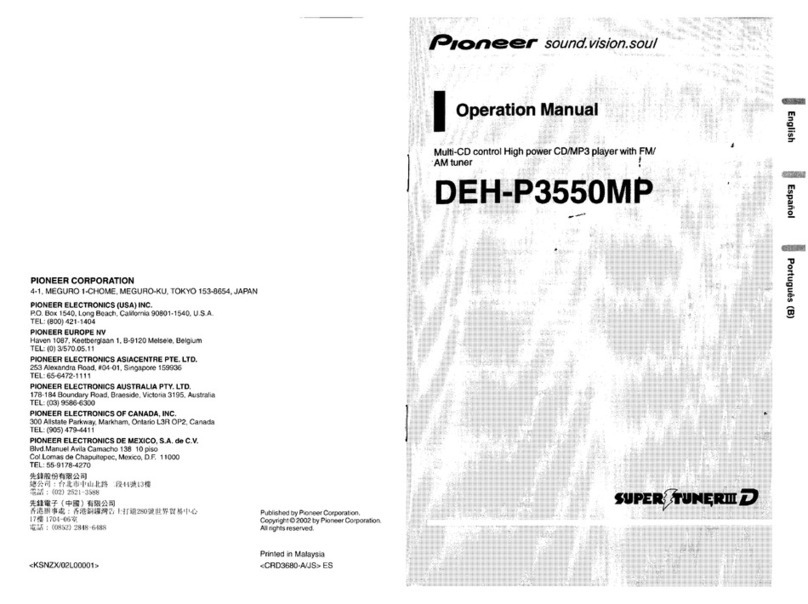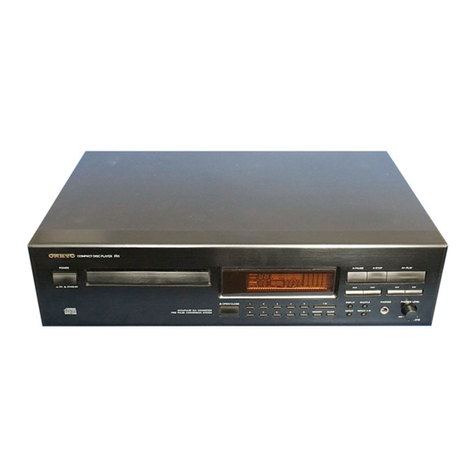
ADJUSTMENT
[AJMAIN
C.B
(PATTERN
SIDE)
Note:
Connect
probe(10:1)
of
frequency
counter
and
oscilloscope
to
test
point.
(Normal
Speed
VCO
Frequency
Adjustment
Open
the
tray
by
pressing
the
OPEN/CLOSE
button.
Short
between
test
points
TP6
(ASY)
and
TP4
(GND)
using
a
short
lead
wire.
Connect
the
frequency
counter
to
TP!
(VCO)
and
TP2
(GND).
Adjust
SFR403(VCO)
so
that
the
frequency
counter
reading
is
4.10
+
0.02
MHz.
After
this
adjustment,
remove
the
short
lead
wire
from
TP6
(ASY)
and
TP4
(GND).
@
Offset
Voltage
Adjustment
PS
ee
is
Connect
a
voltmeter
to
TP3
(PLLV)
and
TP4
(GND).
Turn
the
power
switch
on.
Open
the
tray
by
pressing
the
OPEN/CLOSE
button.
Short
between
test
points
TP6
(ASY)
and
TP4
(GND)
using
a
short
lead
wire.
Also,
short
TP5
(H-SPD)
and
TP4
(GND).
13
VIDE-V04661
/
Druck
4
OY
Oe
TPI3
SFR452
Eb)
©
SFR301
5.
Adjust
SFR301
so
that
the
voltages
at
TP3
(PLLV)
and
TP4
(GND)
are
0
+
0.05
V.
6.
After
this
adjustment,
remove
the
short
lead
wire
from
TP6
(ASY)
and
TPS
(H-SPD).
@
High
Speed
VCO
Frequency
Adjustment
(Y
model
only)
1,
Put
the
unit
in
high
speed
mode
by
turning
the
power
on
while
pressing
the
RANDOM
and
REPEAT/BLANK
buttons.
2.
Open
the
tray
by
pressing
the
OPEN/CLOSE
button.
3.
Short
between
test
points
TP6
(ASY)
and
TP4
(GND)
using
a
short
lead
wire.
Also,
short
TP5
(H-SPD)
and
TP4
(GND).
4.
Connect
the
frequency
counter
to
TP!
(VCO)
and
TP2
(GND).
5.
Adjust
TC301
so
that
the
frequency
counter
reading
is
7.82
+
0,005
MHz.
If
this
specified
value
is
not
met,
readjust
using
L302,
6.
Turn
the
power
off,
7.
Check
that
the
frequency
in
the
normal
speed
adjustment
is
correct.
8.
After
this
adjustment,
remove
the
short
lead
wire
from
TP6
(ASY)
and
TPS
(H-SPD).
@
Focus
Bias
Adjustment
Make
the
focus
bias
adjustment
when
replacing
and
repairing
the
optical
block.
Oscilloscope
(DC
range)
MAIN
C.B
——
TP7(RF)o
TP8(GND)o
1.
Connect
the
oscilloscope
to
TP7(RF),
TP8(GND).
2.
Turn
on
the
power
switch.
3.
Insert
the
disc
YEDS-18
(YEDS-1)
and
play
back
the
second
track.
4,
Adjust
SFR452(F.B)
to
make
clear
and
maximize
the
waveform,
diamond
shapes
(<>)
can
be
distinguished
in
the
center
of
the
waveform.
RF
signal
waveform
\X
RETR
\
KR
CHER
RY
\)
\
AY
XXX
,9.9.4,9.0:0
OOXXX)
YX
MAX,
VOLT/DIV
:
20mV
TIME/DIV
:
0.5
usec
®
RF
Waveform
Check
This
check
should
be
performed
whenever
the
optical
system
block
is
replaced.
1.
Connect
the
oscilloscope
to
TP7
(RF)
and
TP8
(GND).
2.
Turn
the
power
switch
on.
3.
Insert
the
disc
YEDS-18
(YEDS-1)
and
play
back
the
data
on
the
second
track.
4.
Adjust
SFR
on
the
pickup
board
so
that
a
waveform
appears
in
the
oscilloscope
as
shown
in
the
figure
below.
RF
signal
waveform
NAY
6.0,0505050.0,0'0°05050.7
OOOO
KY
WY
OO
OOCN
a
X
1.4
+
0.3
Vp-p
C
KXAN
Ov
VOLT/DIV:
20
mV
TIME/DIV:
O.5usec
Note:
The
current
of
the
laser
signal
can
be
checked
by
checking
the
voltage
across
R458(10Q).
The
specified
current
value
is
shown
on
the
label
of
the
pickup.
The
difference
should
be
+
6.0
mA.
KSS-150A
15Y98
46.4
mA
K464
Voltage
across
R458
Laser
current
lop
=
:
:
102
14
@©
Tracking
Balance
Adjustment
Oscilloscope
(DC
range)
MAIN
C.B
fs
TPII(T
IN)o
TPLO(GND)©O
—_
.
Connect
the
oscilloscope
to
TP11(T
IN),
TP1O(GND).
Connect
a
center
of
SFR401(TE)
to
ground.
.
Turn
on
the
power
switch.
.
Insert
disc
YEDS-18
(YEDS-1)
and
press
the
[>PLAY
but
ton.
5.
Adjust
SFR451(TB)
so
that
the
waveform
on
the
oscilloscope
is
vertically
symmetrical
as
shown
in
the
figure
below.
i)
.
mm
oF
A
0
+
20mV,
A=
8B
B
VOLT/DIV
:
20mV
TIME/DIV
:
2msec
6.
After
adjustment
is
completed,
remove
the
ground
lead
wire.
Focus/Tracking
Gain
Adjustment
A
frequency
responese
analyzer
is
necessary
ip
order
to
perform
this
adjustment
exactly.
However,
this
gain
has
a
margin,
so
even
if
it
is
Slightly
off,
there
is
no
problem
Therfore,
do
not
perform
this
adjustment.
Focus/tracking
gain
detemines
the
pick-up
follow-up
(vertical
and
horizontal)
relative
mechanical
noise
and
mechanical
shock
when
2-axis
device
operate.
However,
as
these
reciprocate,
the
adjustment
is
at
the
point
where
both
are
satisfied.
@
When
gain
is
raised,
the
noise
when
the
2-axis
device
operates
increases.
@
When
gain
is
lowered,
it
is
more
susceptible
to
mechanical
shock
and
skipping
occurs
more
easily.
@
When
gain
adjustment
is
off,
the
symptoms
below
appear.











